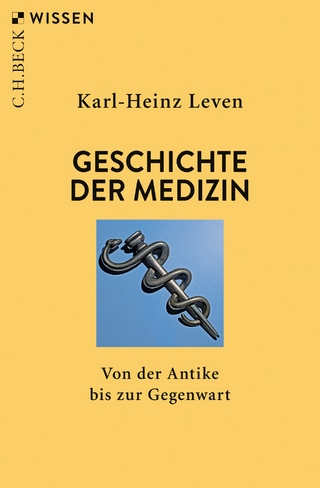
The Technology of Orgasm
"Hysteria," the Vibrator, and Women's Sexual Satisfaction
Seiten
1999
Johns Hopkins University Press (Verlag)
978-0-8018-5941-0 (ISBN)
Johns Hopkins University Press (Verlag)
978-0-8018-5941-0 (ISBN)
From Hippocrates until the 1920s, massaging "hysterical" female patients to orgasm was a staple of medical practice among Western physicians. This text traces the vibrator from its beginning as a sanctioned therapeutic instrument to its fall from respectability and then reappearance as sex aid.
From the time of Hippocrates until the 1920s, massaging "hysterical" female patients to orgasm was a staple of medical practice among Western physicians. Hysteria, an ailment considered common and chronic in women, was thought to be the consequence of sexual deprivation. Doctors performed the "routine chore" of relieving hysterical patient's symptoms with manual genital massage until the women reached orgasm, or, as it was known under clinical conditions, the "hysterical paroxysm". The vibrator first emerges as an electromechanical medical instrument in direct reponse to demand from physicians who, far from enjoying the implementation of pelvic massage, sought every opportunity to substitute the services of midwives and, later, the efficiency of mechanical devices. In this volume, the author offers a candid account of why such treatments were socially and ethically permissible for doctors and why women were believed to require them. She explores the diagnosis of hysteria in Western medicine thorughout the ages and examines the characterization of female sexuality as a disease requiring treatment.
Medical authorities, she writes, were able to defend and justify the clinical production of orgasm in women as necessary to maintain the dominant view of sexuality, which defined sex as penetration to male orgasm - a practice that consistently fails to produce orgasm in a majority of the female population. This male-centred definition of satisfying and healthy coitus shaped not only the development of concepts of female sexual pathology but also the instrumentation designed to cope with them. Invented in the late 1880s by a British physician, the vibrator was popular with turn-of-the-century doctors as a quick, efficient cure for hysteria that neither fatigued the therapist nor demanded skills which were difficult to acquire. Some entrepreneurs even opened vibratory "operating theatres". Maines describes in detail the wide range of vibratory apparatus available to physicians by 1900, from low-priced foot-powered models to the Chattanooga, which cost $200 plus freight in 1904.
She shows how hysterical women presented a large and lucrative clientele for doctors, and vibrators reduced, from about one hour to ten minutes, the time required for a physician to produce results, significantly increasing the number of patients he could treat in the course of a working day. These women were ideal patients in that they neither recovered nor died from their condition but continued to require regular medical "treatment". Maine traces the vibrator from its beginning as a sanctioned therapeutic instrument to its fall from respectability and disappearance from medical offices - after appearing in stage films in the 1920s - to its re-emergence in the 1960s as a sex aid.
From the time of Hippocrates until the 1920s, massaging "hysterical" female patients to orgasm was a staple of medical practice among Western physicians. Hysteria, an ailment considered common and chronic in women, was thought to be the consequence of sexual deprivation. Doctors performed the "routine chore" of relieving hysterical patient's symptoms with manual genital massage until the women reached orgasm, or, as it was known under clinical conditions, the "hysterical paroxysm". The vibrator first emerges as an electromechanical medical instrument in direct reponse to demand from physicians who, far from enjoying the implementation of pelvic massage, sought every opportunity to substitute the services of midwives and, later, the efficiency of mechanical devices. In this volume, the author offers a candid account of why such treatments were socially and ethically permissible for doctors and why women were believed to require them. She explores the diagnosis of hysteria in Western medicine thorughout the ages and examines the characterization of female sexuality as a disease requiring treatment.
Medical authorities, she writes, were able to defend and justify the clinical production of orgasm in women as necessary to maintain the dominant view of sexuality, which defined sex as penetration to male orgasm - a practice that consistently fails to produce orgasm in a majority of the female population. This male-centred definition of satisfying and healthy coitus shaped not only the development of concepts of female sexual pathology but also the instrumentation designed to cope with them. Invented in the late 1880s by a British physician, the vibrator was popular with turn-of-the-century doctors as a quick, efficient cure for hysteria that neither fatigued the therapist nor demanded skills which were difficult to acquire. Some entrepreneurs even opened vibratory "operating theatres". Maines describes in detail the wide range of vibratory apparatus available to physicians by 1900, from low-priced foot-powered models to the Chattanooga, which cost $200 plus freight in 1904.
She shows how hysterical women presented a large and lucrative clientele for doctors, and vibrators reduced, from about one hour to ten minutes, the time required for a physician to produce results, significantly increasing the number of patients he could treat in the course of a working day. These women were ideal patients in that they neither recovered nor died from their condition but continued to require regular medical "treatment". Maine traces the vibrator from its beginning as a sanctioned therapeutic instrument to its fall from respectability and disappearance from medical offices - after appearing in stage films in the 1920s - to its re-emergence in the 1960s as a sex aid.
Rachel P. Maines is an independent scholar and the owner of Maines and Associates, a firm that provides cataloging, inventory, and research services to museums and archives. She is also the author of numerous articles in scholarly and popular publications.
Preface
Acknowledgments
Chapter 1. THE JOB NOBODY WANTED
Chapter 2. FEMALE SEXUALITY AS HYSTERICAL PATHOLOGY
Chapter 3. "MY GOD, WHAT DOES SHE WANT?"
Chapter 4. "INVITING THE JUICES DOWNWARD"
Chapter 5. REVISING THE ANDROCENTRIC MODEL
Notes
Notes on Sources
Index
| Erscheint lt. Verlag | 12.3.1999 |
|---|---|
| Reihe/Serie | Johns Hopkins Studies in the History of Technology |
| Zusatzinfo | 26 Illustrations, black and white |
| Verlagsort | Baltimore, MD |
| Sprache | englisch |
| Maße | 140 x 216 mm |
| Gewicht | 363 g |
| Themenwelt | Sachbuch/Ratgeber ► Gesundheit / Leben / Psychologie ► Partnerschaft / Sexualität |
| Medizin / Pharmazie ► Medizinische Fachgebiete ► Neurologie | |
| Studium ► Querschnittsbereiche ► Geschichte / Ethik der Medizin | |
| Sozialwissenschaften | |
| Technik ► Medizintechnik | |
| ISBN-10 | 0-8018-5941-7 / 0801859417 |
| ISBN-13 | 978-0-8018-5941-0 / 9780801859410 |
| Zustand | Neuware |
| Haben Sie eine Frage zum Produkt? |
Mehr entdecken
aus dem Bereich
aus dem Bereich
von der Antike bis zur Gegenwart
Buch | Softcover (2024)
C.H.Beck (Verlag)
12,00 €
Die Geschichte eines Weltzentrums der Medizin von 1710 bis zur …
Buch | Softcover (2021)
Lehmanns Media (Verlag)
17,95 €
Krankheitslehren, Irrwege, Behandlungsformen
Buch | Softcover (2024)
C.H.Beck (Verlag)
39,95 €


